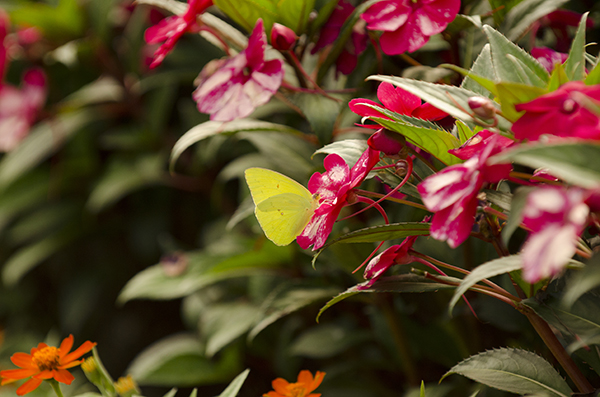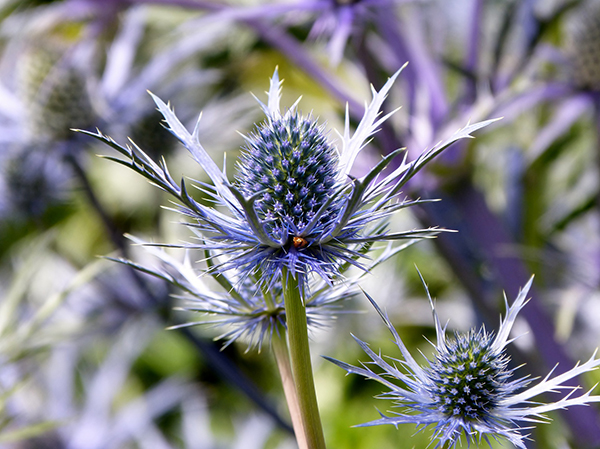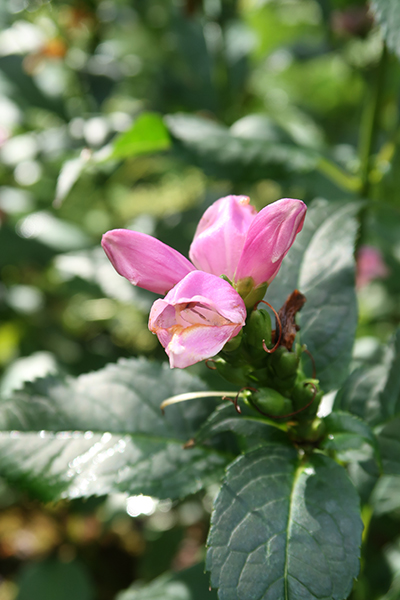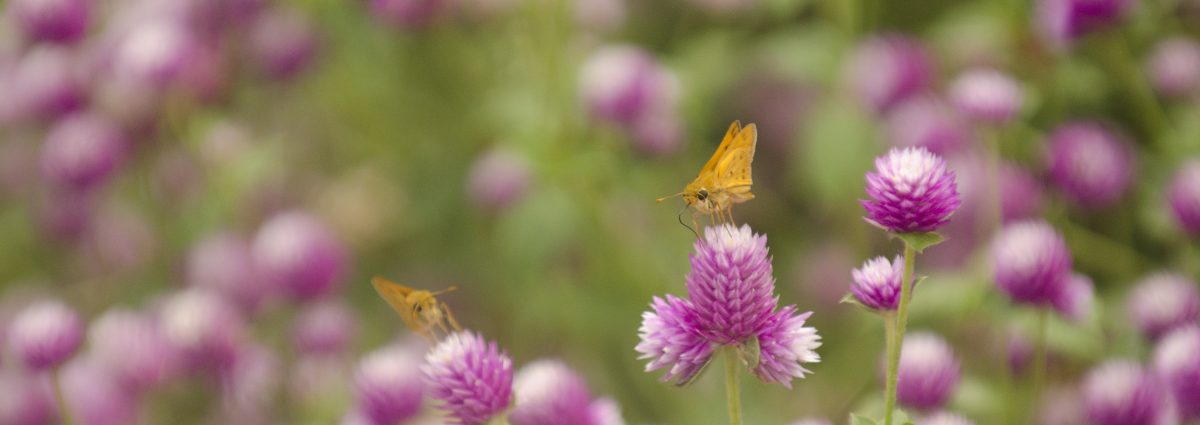Pollinators: The Rhythm Section of the Garden
Published: 5/13/2020
Pollination: most of us have a baseline understanding of what the word means, but do we fully understand what a vital force pollination has over the beauty and bounty that surrounds us? The success of our food supply is reliant on a myriad of small creatures who make up the very fibers of the world’s ecosystem. Let’s celebrate the birds, bees, butterflies, bats and other pollinators that are endemic to Tennessee by exploring ways in which we can make our gardens more inviting.
Pollinators are essential to a garden’s success, which can certainly be measured by beauty, though more quantitatively by a good harvest. These animals of various small sizes are essential to the world’s food supply, responsible for bringing us one out of every three bites of food. They also sustain our ecosystems and produce our natural resources by helping plants reproduce.

It’s a well-known fact that the Earth’s natural areas have been devastatingly diminished by human activity. Pollinator populations are at a steady and severe decline as a direct result of habitat loss, pests and pathogens, exposure to pesticides and other stressors. Of all the world’s plants, three fourths rely on pollinators (mostly bees) to reproduce. According to the U.S. Department of Agriculture, bees have a crop value of $15 billion a year. To help counterbalance the plummet of these essential creatures, experts advise that we rethink weed-management strategies, as well as pesticide use (especially neonicotinoids), and encourage planting gardens that attract pollinators.
By growing mostly native plants in our gardens, including nectar-rich species, biodiversity is encouraged. Of the 55 genera of bees within Tennessee, some pollinators are “generalists” while others are “specialists”. Generalists will feed on a variety of nectars and pollens while specialists need only one species, either for feeding or for hosting their eggs. Goldenrod, or Solidago, is a good place to start if you want to increase the number of pollinators in your garden fast, since there are 13 species of insects that use this plant and this plant alone!

For the healthiest and most pollinator-friendly garden, plant lush layers of floral clumps. Focus on using several individuals of 5-7 different plants that together can ensure an extended bloom period, from March until frost or longer. Ask yourself if the plants you want to use are well-behaved while also providing effective habitats for the pollinators you want to attract, leaning more towards native species when in doubt. However, natives aren’t the only thing to consider when selecting plants. Bees prefer open-faced, or single-flowered blooms, like echinacea or hibiscus and flowers with exposed or long cylindrical centers like Ratibida (Mexican hat plant) and Eryngium (seaholly). Double-flowered blooms just make it too much of a challenge for bees and some other pollinators to access pollen and nectar.
When considering pollinator-rich gardens at Cheekwood, two gardens come to mind: Wills Perennial Garden and the Howe Garden. Both are different in terms of the plant material and the pollinators they attract. The Wills Perennial Garden is a healthy mixture of natives and non-natives, including the early-flowering Ribes odoratum (native) which attracts bees and hummingbirds, and the later-flowering purple-top verbena or Verbena bonariensis, a South American native that will flower until frost, attracts goldfinches. The Wills Perennial Garden also hosts a healthy planting of Asclepias curassavica that serves as a Monarch butterfly host plant.

The Howe Garden is a nearly-native garden, staying true to its mission statement and the namesake’s (Cora Howe) legacy, growing many Asclepias tuberosa (butterfly weed), native azaleas, and Tennessee coneflower. I like to think of pollinators as the rhythm section of the garden, steadily increasing the pace until the garden crescendos at the peak of summer and afterward, producing each note slightly further apart as the garden prepares to sleep. This garden awakens before the dawn of spring, in late February. Crocus, Claytonia, Witchhazel, Snowdrops, and Trillium emerge to meet the most eager of pollinators, those bees that venture from the nest for a couple of hours a day as the temperatures begin to rise. Late flowering perennials such as Rudbeckia, Chelone, and Aster, extend the party for those pollinators that linger until later fall and early winter.
Besides growing plants that pollinators use for food and host plants, there are several other things that can be done within the garden to encourage bees and butterflies to stick around. Planting a row of shrubs or even using a fence can shelter the habitat or garden from wind that can be disruptive to the habitat. Situating your garden in a sunny location is good not only for pollinator-loving plants, but for the insects themselves. Butterflies, in general need warm wings (a minimum of 58 degrees is required) and the sun also helps them with orientation. Be sure to also include plants and shrubs that provide shelter to give butterflies refuge for when inclement weather occurs, or predators are in the area. Salt minerals are also beneficial to butterfly health. This is the reason they can be seen gathering in muddy areas. Keeping a few shallow pans inserted into the ground full of wet, course sand will also add to their quality of life.
A reliable water source is also vital for happy bees. Making a little water oasis with a shallow, pebble-filled container and keeping it fresh will ensure that the bees have plenty of clean drinking water.

Twice a year in spring and fall, representatives of the North American Butterfly Association conduct a butterfly count. Below are notes taken from their visit to Cheekwood in September 2019.
North American Butterfly Association
Fall Butterfly Count 9/9/2019
Cheekwood —Rita Venable (observer)
9:15–11:15 a.m.
73–85 deg, F.
20% cloud cover
Wind 0–5 mph.
Covered about 1 mile on foot.
1. Pipevine Swallowtail–2
2. Orange Sulphur–1
3. Cloudless Sulphur–7 (nectaring on orange canna, honeysuckle, & cardinal flower)
4. Sleepy Orange–2
5. Dainty Sulphur–1
6. Eastern Tailed-Blue–1
7. Gulf Fritillary–12
8. Pearl Crescent–1 (nectaring on mistflower)
9. American Lady–1
10. Common Buckeye–6
11. Hackberry Emperor–2
12. Monarch–1
13. Silver-spotted Skipper–4
14. Wild Indigo Duskywing–4 (1 egg-laying)
15. Clouded Skipper–3
16. Least Skipper–1
17. Fiery Skipper–20
18. Northern Broken-Dash–1
19. Sachem–13
20. Dun Skipper–1
21. Bell’s Roadside-Skipper–2
Field notes: Groundhog, white crownbeard covered with soldier beetles, Eastern bluebird, Carolina wren. Two Wild Indigo Duskywing eggs on wild indigo. Dry weather conditions were ameliorated by the watering of plants.
By fostering gardens for pollinators, we can help offset agricultural spraying and land development contributing to the resulting habitat loss while creating a slice of beauty for ourselves and our neighbors to appreciate. Start small and use plants that create good habitat, minimize pesticide use, and conserve water and soil.

